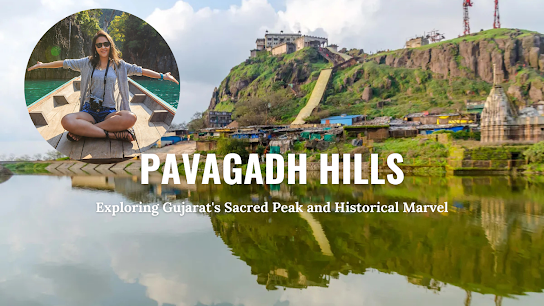Introduction: Discovering Darjeeling's Charm
Nestled in the foothills of the Eastern Himalayas, Darjeeling is a picturesque hill station in West Bengal, India. Known for its lush tea gardens, panoramic mountain views, and colonial architecture, Darjeeling offers a unique blend of natural beauty and cultural richness.
Historical Background: A Colonial Legacy
Darjeeling's history is intertwined with British colonialism. In the 19th century, the British established it as a summer retreat to escape the heat of the plains. The town's cool climate and strategic location made it an ideal spot for tea cultivation and military outposts. Today, remnants of colonial architecture, such as the Planters' Club and St. Andrew's Church, stand as testaments to its historical significance.India Travel, Wikipedia
The Tea Capital: Darjeeling's World-Famous Tea
Darjeeling is synonymous with tea. Often referred to as the "Champagne of Teas," Darjeeling tea is renowned for its unique flavor and aroma. The region boasts over 80 tea estates, including the historic Happy Valley Tea Estate, established in 1854. Visitors can tour these plantations, witness the tea-making process, and indulge in tea-tasting sessions. Incredible India Stamped Moments
Scenic Beauty: Panoramic Views and Natural Wonders
Darjeeling offers breathtaking views of the Himalayas, including the majestic Kanchenjunga, the third-highest mountain in the world. Popular viewpoints like Tiger Hill provide stunning sunrise vistas over the snow-capped peaks. The town's verdant landscapes, dotted with rhododendrons and orchids, make it a haven for nature lovers.Reddit
Cultural Diversity: A Melting Pot of Traditions
Darjeeling's population is a mosaic of various ethnic groups, including Nepalis, Tibetans, Bengalis, and Lepchas. This diversity is reflected in the town's festivals, cuisine, and daily life. Visitors can experience traditional dances, sample local delicacies like momos and thukpa, and explore monasteries that showcase the region's spiritual heritage.Wikivoyage
The Darjeeling Himalayan Railway: A Journey Through Time
A UNESCO World Heritage Site, the Darjeeling Himalayan Railway, affectionately known as the "Toy Train," is a marvel of engineering. Established in the late 19th century, this narrow-gauge railway winds through the mountains, offering passengers scenic views and a nostalgic travel experience. Condé Nast Traveler
Adventure Activities: Thrills in the Hills
For adventure enthusiasts, Darjeeling offers a range of activities:
-
Trekking: Explore trails like the Sandakphu trek, which offers panoramic views of the Everest and Kanchenjunga ranges.
-
Paragliding: Soar above the hills and valleys for a bird's-eye view of the landscape.
-
River Rafting: Navigate the Teesta River's rapids for an adrenaline-pumping experience.
Local Cuisine: A Gastronomic Delight
Darjeeling's culinary scene is as diverse as its population. Must-try dishes include:
-
Momos: Steamed dumplings filled with meat or vegetables.
-
Thukpa: A hearty noodle soup with vegetables and meat.
-
Sel Roti: A traditional Nepali rice-based doughnut.
Pair these dishes with a cup of freshly brewed Darjeeling tea for an authentic experience.
Shopping: Souvenirs and Handicrafts
Darjeeling's markets are treasure troves of local handicrafts and souvenirs. Popular items include:
-
Hand-woven textiles: Scarves, shawls, and blankets made by local artisans.
-
Traditional jewelry: Intricate designs reflecting the region's cultural heritage.
-
Tea: Various blends and grades of Darjeeling tea, perfect for gifting.
Best Time to Visit: Seasonal Highlights
The ideal time to visit Darjeeling is between March and May or October and November. These months offer pleasant weather and clear skies, perfect for sightseeing and outdoor activities. The monsoon season (June to September) brings heavy rainfall, which can lead to landslides and travel disruptions. TripCrafters
Accessibility: Getting to Darjeeling
By Air: The nearest airport is Bagdogra Airport, approximately 70 kilometers away.
By Train: New Jalpaiguri (NJP) is the closest major railway station, connected to various Indian cities.Condé Nast Traveler
By Road: Regular bus and taxi services operate from Siliguri to Darjeeling.
By Toy Train: Experience the scenic journey from NJP to Darjeeling on the Darjeeling Himalayan Railway.Condé Nast Traveler
Conclusion: Embracing the Essence of Darjeeling
Darjeeling, with its captivating landscapes, rich history, and cultural diversity, offers an unforgettable experience for travelers. Whether you're sipping tea amidst the plantations, exploring colonial-era architecture, or witnessing the sunrise over the Himalayas, Darjeeling promises memories that will last a lifetime.
Note: For the most accurate and updated information, always refer to the official Darjeeling Tourism website.
.png)

.png)
.png)
.png)